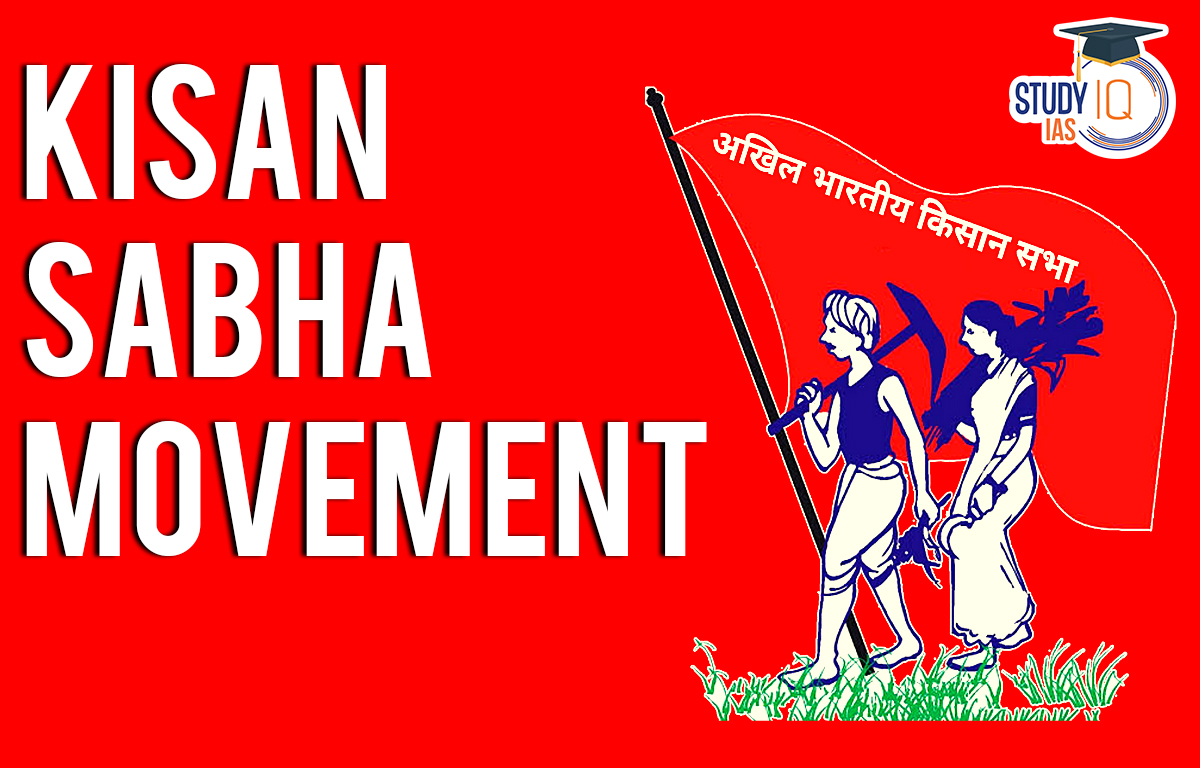Table of Contents
Kisan Sabha Movement
The Kisan Sabha Movement was a peasant uprising that took place in the former United Provinces’ Awadh area (U.P). The poor living circumstances of the U.P. peasants brought on by the policies of the British Government and the Awadh Taluqdars were the primary cause of this movement. After the political transfer of India from the East India Company to the British Crown, the land income of the entire country of India gradually increased. The Kisan Sabha Movement (1857) will be covered in this article, which will be beneficial for UPSC exam preparation.
Read More: Ahmedabad Mill Strike
Kisan Sabha Movement History
In the wake of the 1857 uprising, the Awadh taluqdars recovered their lands. This consolidated the power of the province’s large landowners, known as taluqdars. The majority of farmers had to deal with high rents, bedakhalis (summary evictions), unjustified levies, renewal fees, or nazrana. The First World War had raised the price of food and other essentials. The situation of the UP peasantry was made worse by this.
The major centers of activity were located in the districts of Rai Bareilly, Faizabad, and Sultanpur. The Awadh Rent (Amendment) Act and government persecution both played a role in the movement’s rapid decline.
Read More: National Education Policy
Kisan Sabha Movement Causes
The taluqdars, or big landowners, tightened their control over the province’s agrarian society in the second half of the nineteenth century after Avadh was annexed in 1856. The majority of farmers now had to endure exorbitant rents, unlawful levies, renewal fees, or nazrana, and arbitrary evictions, or bedakhli. The oppression was made worse by the high cost of food and other necessities during and after World War I, so the residents of Avadh were ready to spread a message of defiance.
Read More: Surat Split
Kisan Sabha Movement Outcome
Activists for Home Rule were mainly responsible for the organisation of Kisan Sabhas in UP. Indra Narayan Dwivedi and Gauri Shankar Mishra established the United Provinces Kisan Sangh in February 1918. They had the support of Madan Mohan Malaviya in their endeavours. By June 1919, the UP Kisan Sabha had 450 branches.
The other notable figures included Baba Ramchandra, Durgapal Singh, and Jhinguri Singh. In June 1920, Baba Ramchandra encouraged Nehru to travel to these villages. Nehru developed strong relationships with the villagers during these visits. The Awadh Kisan Sabha was established in October 1920 as a result of disputes among nationalists.
The Awadh Kisan Sabha urged farmers to boycott anyone who refused to accept these conditions, abstain from offering hari and begar (forms of unpaid labour), and resolve their differences through panchayats. Looting of bazaars, homes, and granaries, as well as altercations with the police, quickly replaced previous forms of mass meetings and mobilisation in January 1921.
Read More: Indian National Movement
Kisan Sabha Movement and Sahajanand Saraswati
Sahajanand Saraswati, who established the Bihar Provincial Kisan Sabha (BPKS) in 1929 to organise peasant complaints against zamindari attacks on their occupancy rights and launch India’s farmers’ movements, is credited with starting the Kisan Sabha movement in Bihar. Over time, the peasant movement gained momentum and spread throughout the remainder of India.
While Swami Sahajanand Saraswati and his Kisan Sabha had a clear legal vision for the development of Indian society through the empowerment of peasants and workers, they lacked a vision for the constitution of the newly sovereign country of India. The All India Kisan Sabha was a well-known farmer uprising against the Zamindari System that started in the twentieth century. It improved the living circumstances of farmers, peasants, and other agricultural and rural laborers.
Read More: Vernacular Press Act
Kisan Sabha Movement UPSC
Even under colonial authority, farmers frequently protested for their rights. The Kisan Sabha Movement was characterised by the inclusion of kisans from both the higher and lower castes. In response to government repression, the Kisan Sabha Movement rapidly disintegrated. The campaign was also stifled by the Awadh Rent (Amendment) Act. Read all about kisan Sabha Movement in details for UPSC Exam Preparations.
Read More: Ilbert Bill


 Jallianwala Bagh Massacre, Date, History...
Jallianwala Bagh Massacre, Date, History...
 Important Lakes of India, State wise and...
Important Lakes of India, State wise and...
 Buddhism History, Origin, Sect, Councils...
Buddhism History, Origin, Sect, Councils...





















